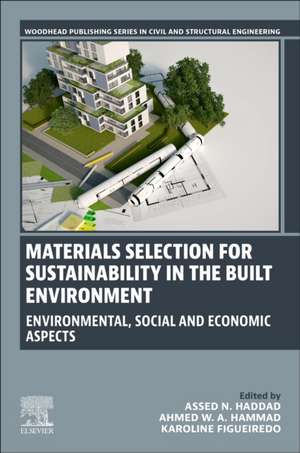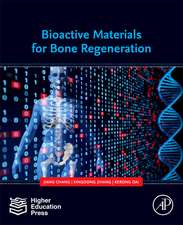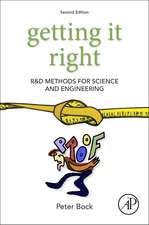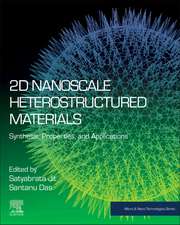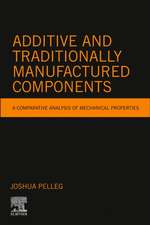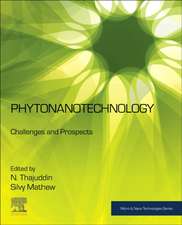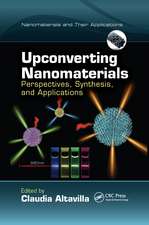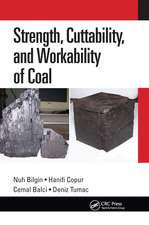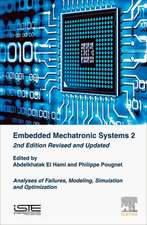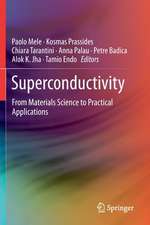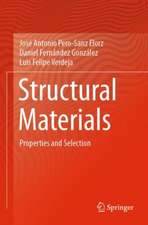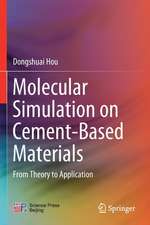Materials Selection for Sustainability in the Built Environment: Environmental, Social and Economic Aspects: Woodhead Publishing Series in Civil and Structural Engineering
Editat de Assed N. Haddad, Ahmed W.A. Hammad, Karoline Figueiredoen Limba Engleză Paperback – 15 feb 2024
Finally, the book reviews previous publications on construction material selection and presents essential discussions on the role professionals, researchers, contractors and governments play in making more sustainable decisions on the built environment.
- Presents a lifecycle management-based, systematic and integrated approach for sustainable construction materials selection
- Discusses the impact of materials selection, covering every aspect of sustainability (environmental, social and economic aspects)
- Looks at the concept of the circular economy
- Provides case studies on decision-making methods in combination with lifecycle sustainability assessments
Din seria Woodhead Publishing Series in Civil and Structural Engineering
- 24%
 Preț: 1419.36 lei
Preț: 1419.36 lei - 9%
 Preț: 931.67 lei
Preț: 931.67 lei - 29%
 Preț: 1333.83 lei
Preț: 1333.83 lei - 29%
 Preț: 1196.79 lei
Preț: 1196.79 lei - 29%
 Preț: 1074.37 lei
Preț: 1074.37 lei - 9%
 Preț: 805.54 lei
Preț: 805.54 lei - 29%
 Preț: 1329.07 lei
Preț: 1329.07 lei - 31%
 Preț: 1008.03 lei
Preț: 1008.03 lei - 9%
 Preț: 1008.22 lei
Preț: 1008.22 lei - 27%
 Preț: 780.87 lei
Preț: 780.87 lei - 39%
 Preț: 858.21 lei
Preț: 858.21 lei - 29%
 Preț: 1333.96 lei
Preț: 1333.96 lei - 29%
 Preț: 1195.75 lei
Preț: 1195.75 lei - 9%
 Preț: 1333.91 lei
Preț: 1333.91 lei - 28%
 Preț: 1140.27 lei
Preț: 1140.27 lei - 37%
 Preț: 683.84 lei
Preț: 683.84 lei - 9%
 Preț: 879.75 lei
Preț: 879.75 lei - 23%
 Preț: 1134.17 lei
Preț: 1134.17 lei - 24%
 Preț: 922.75 lei
Preț: 922.75 lei - 39%
 Preț: 1475.52 lei
Preț: 1475.52 lei - 9%
 Preț: 900.78 lei
Preț: 900.78 lei - 39%
 Preț: 901.38 lei
Preț: 901.38 lei - 23%
 Preț: 1516.67 lei
Preț: 1516.67 lei - 9%
 Preț: 1153.90 lei
Preț: 1153.90 lei - 23%
 Preț: 1083.03 lei
Preț: 1083.03 lei - 24%
 Preț: 874.91 lei
Preț: 874.91 lei - 24%
 Preț: 1048.97 lei
Preț: 1048.97 lei - 9%
 Preț: 1107.70 lei
Preț: 1107.70 lei - 9%
 Preț: 1187.11 lei
Preț: 1187.11 lei - 23%
 Preț: 1129.24 lei
Preț: 1129.24 lei - 24%
 Preț: 986.08 lei
Preț: 986.08 lei - 28%
 Preț: 1285.96 lei
Preț: 1285.96 lei - 29%
 Preț: 1300.03 lei
Preț: 1300.03 lei - 29%
 Preț: 1280.31 lei
Preț: 1280.31 lei - 29%
 Preț: 1330.37 lei
Preț: 1330.37 lei - 9%
 Preț: 746.20 lei
Preț: 746.20 lei - 37%
 Preț: 683.94 lei
Preț: 683.94 lei - 23%
 Preț: 1202.24 lei
Preț: 1202.24 lei - 29%
 Preț: 1481.04 lei
Preț: 1481.04 lei - 9%
 Preț: 812.56 lei
Preț: 812.56 lei - 24%
 Preț: 1186.01 lei
Preț: 1186.01 lei - 9%
 Preț: 1357.19 lei
Preț: 1357.19 lei - 9%
 Preț: 842.75 lei
Preț: 842.75 lei - 23%
 Preț: 1416.56 lei
Preț: 1416.56 lei - 39%
 Preț: 1189.20 lei
Preț: 1189.20 lei - 24%
 Preț: 1162.19 lei
Preț: 1162.19 lei - 24%
 Preț: 1007.79 lei
Preț: 1007.79 lei - 9%
 Preț: 1007.35 lei
Preț: 1007.35 lei
Preț: 1469.98 lei
Preț vechi: 2013.67 lei
-27% Nou
Puncte Express: 2205
Preț estimativ în valută:
281.32€ • 292.61$ • 232.24£
281.32€ • 292.61$ • 232.24£
Carte tipărită la comandă
Livrare economică 15-29 aprilie
Preluare comenzi: 021 569.72.76
Specificații
ISBN-13: 9780323951227
ISBN-10: 0323951228
Pagini: 552
Dimensiuni: 152 x 229 mm
Greutate: 0.73 kg
Editura: ELSEVIER SCIENCE
Seria Woodhead Publishing Series in Civil and Structural Engineering
ISBN-10: 0323951228
Pagini: 552
Dimensiuni: 152 x 229 mm
Greutate: 0.73 kg
Editura: ELSEVIER SCIENCE
Seria Woodhead Publishing Series in Civil and Structural Engineering
Public țintă
Academic and industrial researchers working in the development of sustainable construction materials, civil, building, and environmental engineers, architects, and decision makers in Government agenciesPhD students working in the field of materials science and construction engineering
Cuprins
List of Contributors Table of Contents Preface Introduction The triple-bottom-line perspective and its importance for the Built Environment Importance of Material Selection to achieve sustainable construction Importance of decision-making in materials selection Employing circular economy principles to enhance sustainability in the Built Environment Standards and legal regulations regarding sustainable construction Introductory overview Assessment of concrete and cementitious materials Assessment of wood Assessment of glass Concluding overview: Advancements in Building Materials Technology Life Cycle Sustainability Assessment (LCSA) applied in the Built Environment Simulation tools to assist materials choice Multicriteria decision-making methods Pareto Machine learning decision-making tools Case study I: Development of laminated wood products from Eucalyptus nitens in the Chilean context Case study II: Application of Life Cycle Sustainability Assessment in BIM in early design stages for the selection of the structural system of a residential building in Spain Case study III: Designing sustainable timber-concrete composite floor system Case study IV: Thermal and Environmental performance assessment of opaque facade systems in the early design stage: an integrated approach Case study V: Mollusk shells to replace conventional aggregates in concrete Case study VI: Insulation materials choice in building retrofitting: The Influence of social determinants in the Spanish Context Sustainable Material Choice in Construction Projects via Mathematical Programming Concluding Remarks: Future Directions and Emerging Trends in Sustainable Material Selection for the Built Environment
